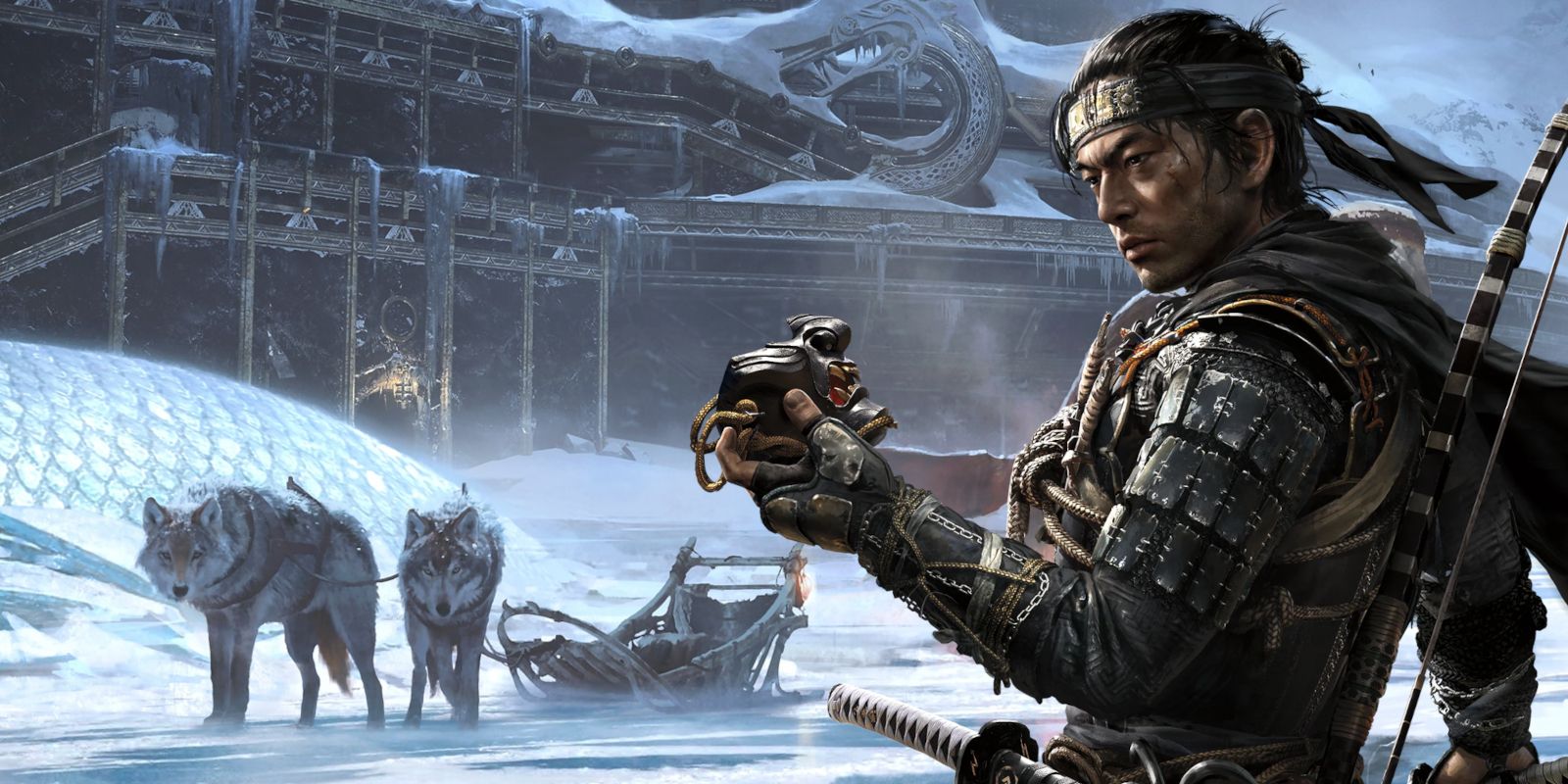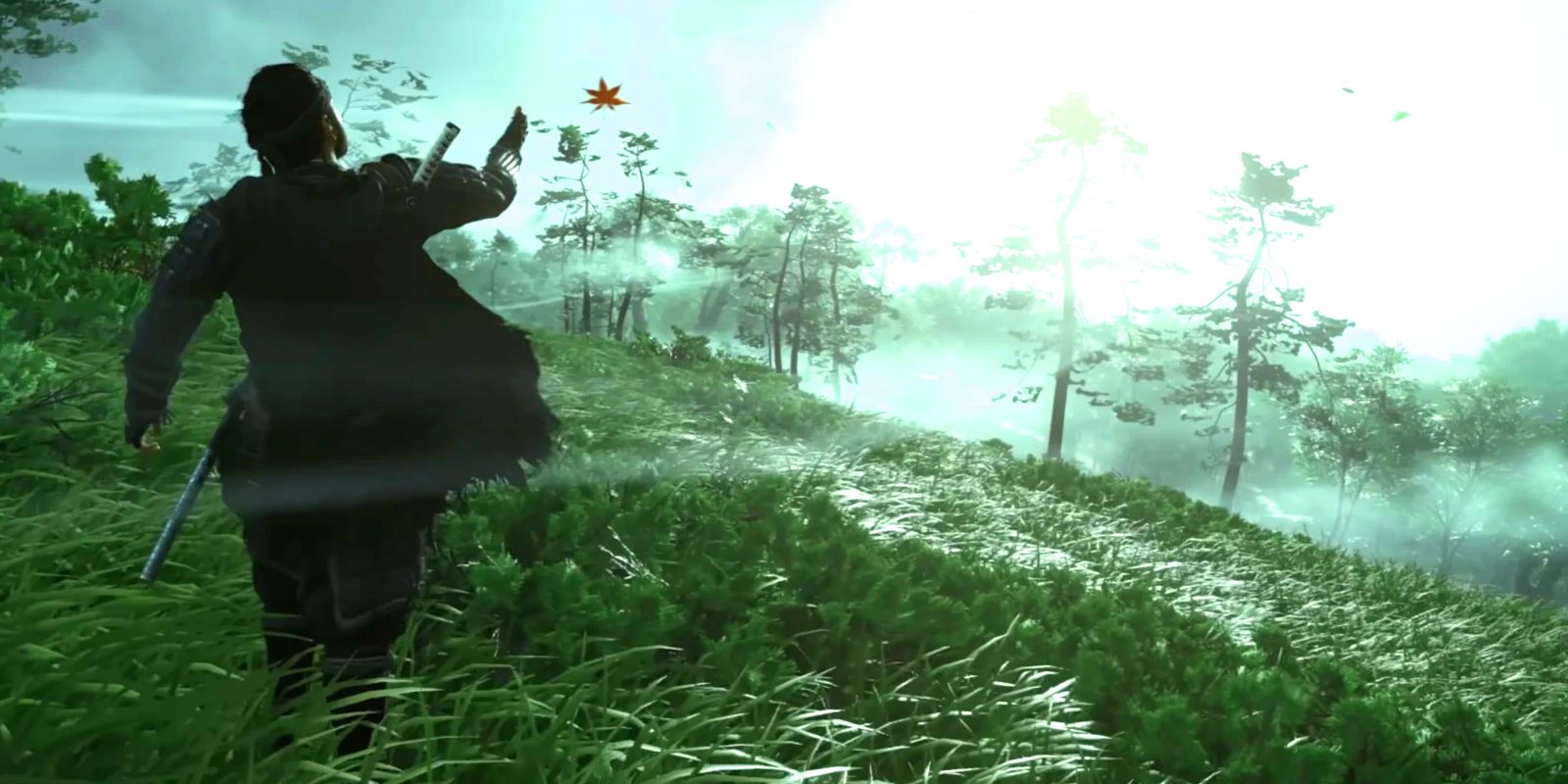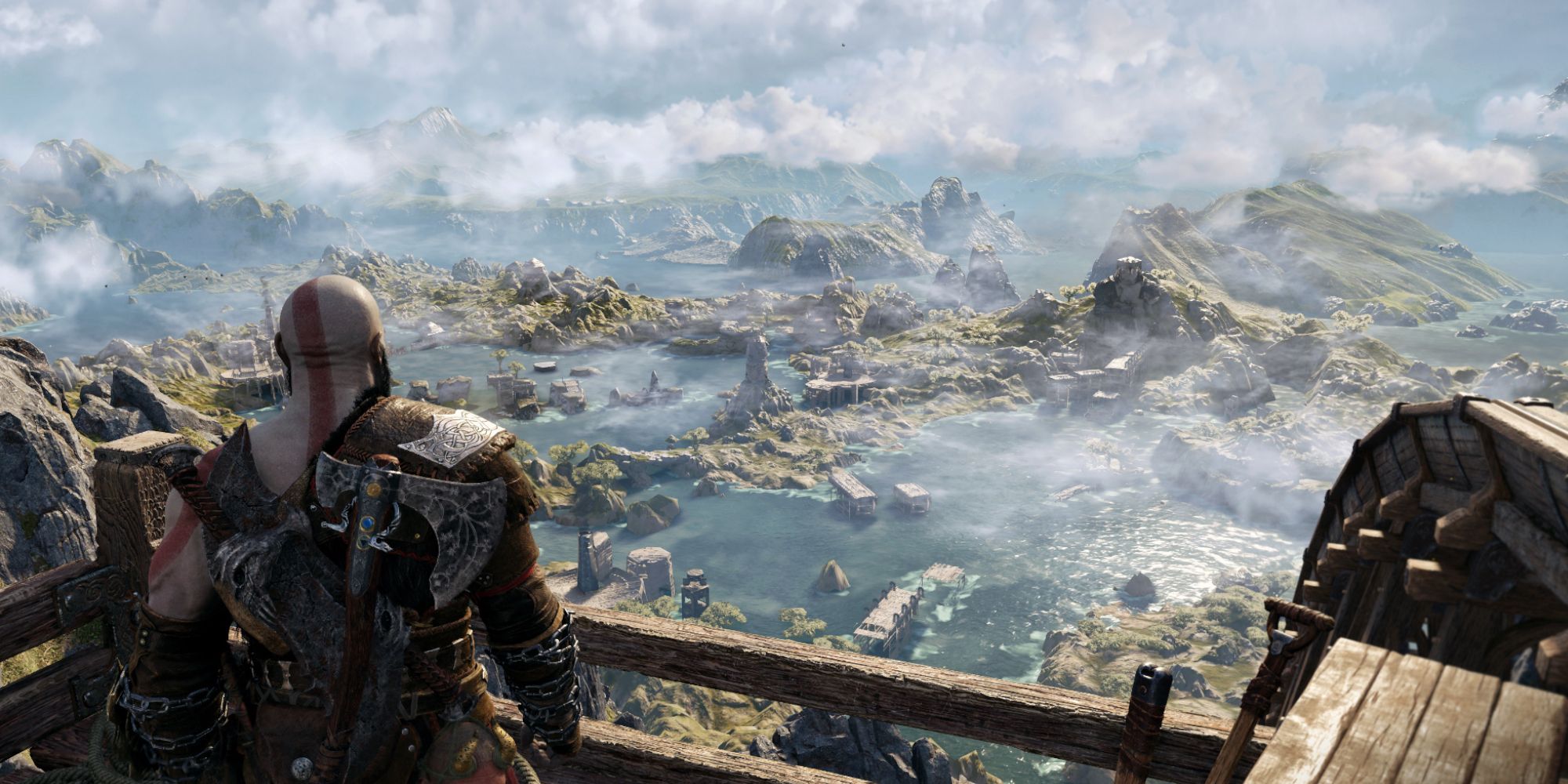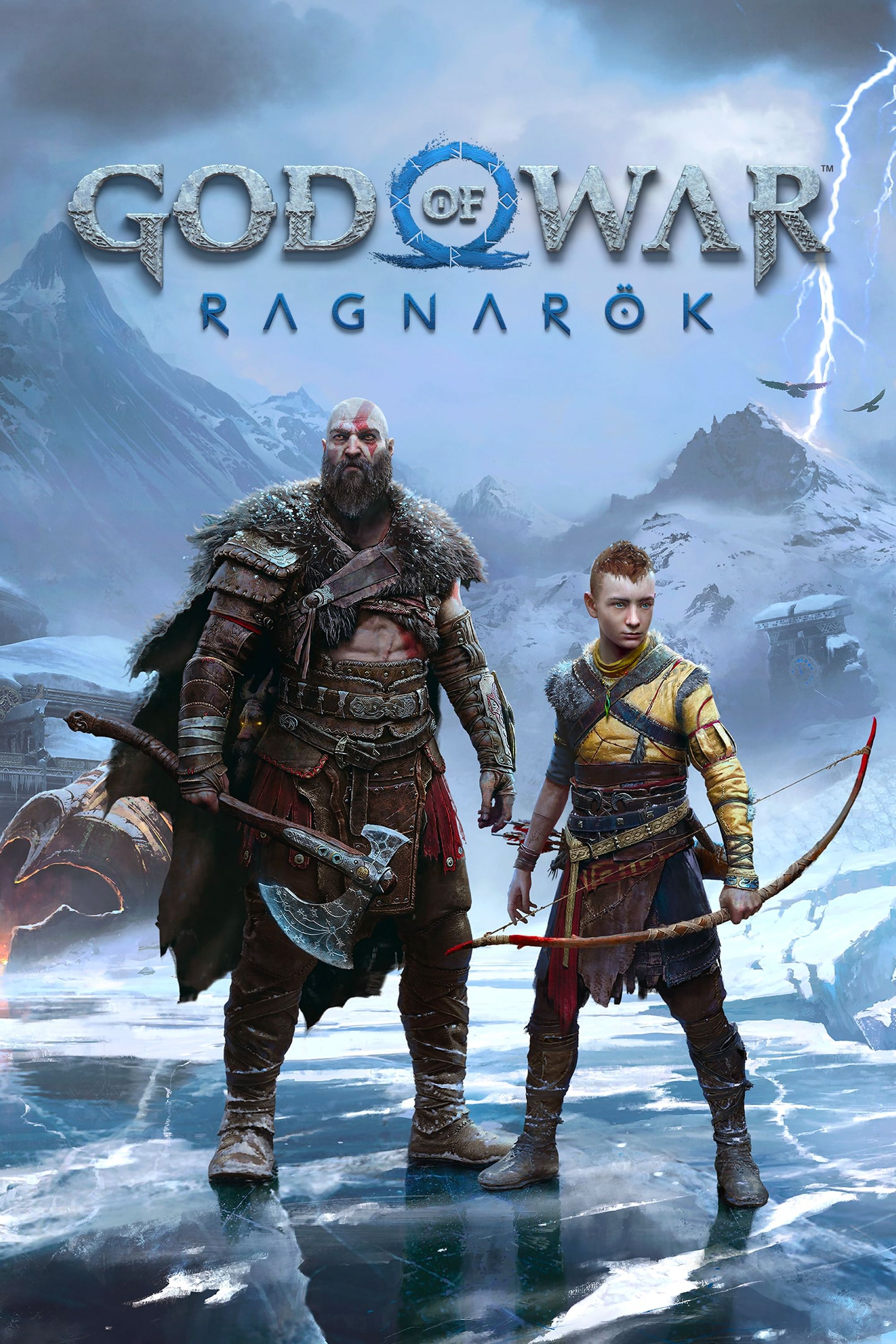One of the most contentious elements of open-world games is map markers, a feature that God of War Ragnarok attempts to downplay. Santa Monica Studios has faced backlash for the way that the characters in Ragnarok try to railroad the player through puzzles and story beats, but in other places the game keeps this to a minimum by hiding map markers until the player tags them. At one point, Ragnarok blends immersion and railroading in a brilliant way, and it seems inspired by its PlayStation sibling Ghost of Tsushima. However, it never comes close to striking that balance again.
During the quest "The Word of Fate," Kratos seeks the counsel of the Norns, the weavers of fate in God of War's version of Norse mythology. To find them, he journeys to Midgard and must rely on the wolves Speki and Svanna to follow the Norns’ scent. In gameplay, this translates to the player steering the sled that the wolves pull through Midgard’s open world, following their subtle head movements and barks to progress the quest. This resembles the Guiding Wind mechanic in Ghost of Tsushima, and Ragnarok could have taken more tips from the former game’s respect for immersion.
Ghost Of Tsushima's Guiding Wind Solves The Mini-Map Problem
In Ghost of Tsushima, the Guiding Wind is a simple and immersive mechanic: the player marks an objective on the map, and when activated, the in-game wind picks up and blows in the direction of the objective. Ghost of Tsushima proves that mini-maps are unnecessary, or at least avoidable, and the “Word of Fate” quest in Ragnarok suggests that Santa Monica Studios is aware of this. Unfortunately, most of the quests in the game just ask the player to follow a path laid out by a marker on their compass, re-enforcing the widespread criticism that the game holds players' hands too much for its own good.
The fact that the mechanic is present at all could also indicate that Santa Monica tried to utilize more immersive railroading techniques throughout but opted to make sure that the player never felt directionless instead. As a sequel to 2018's beloved God of War, beating Ragnarok’s main story is very important to a player's enjoyment of the game. Thus, it makes sense that story goals would be emphasized more than exploration - as opposed to Ghost of Tsushima, where player choice and exploration are as significant to the story, if not more important.
Guidance vs. Immersion In God Of War Ragnarök & Ghost Of Tsushima
Ragnarok tries to strike a balance between guidance and immersion, and sometimes it can feel like the game overplays its hand on the former. The game can successfully guide the player by having characters point out landmarks they might have missed, but it can get overbearing to have NPCs essentially solve puzzles before the player has a chance to figure things out on their own. Late into the game, meanwhile, Kratos is able to find one of God of War Rangarok’s biggest and best areas without feeling railroaded into it or having characters pressure the player into visiting. It appears that making sure players always had a direction has soured some of what Santa Monica was trying to achieve.
Although being given the room to explore the Nine Realms in a more immersive way - without relying on map markers or incessant dialogue - would be great for some, it’s understandable that Santa Monica designed the game to appeal to the broadest possible audience and give them the direction they need to finish the game. Perhaps the solution would be to add customizable exploration settings to God of War Ragnarok’s already extensive accessibility options. Whether this happens or not, God of War Ragnarok is still a commendable attempt to balance immersion and direction, and one that other games should use in the future as a case study on what works - and what doesn’t.
Source: PlayStation/YouTube




